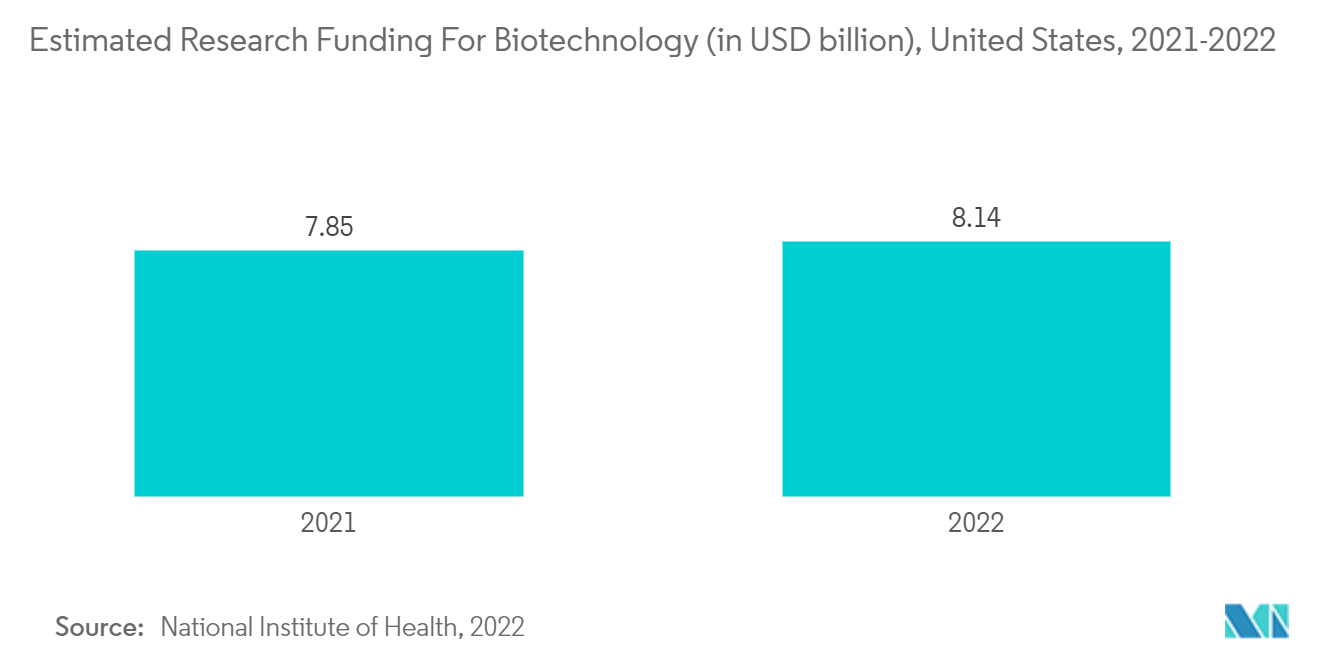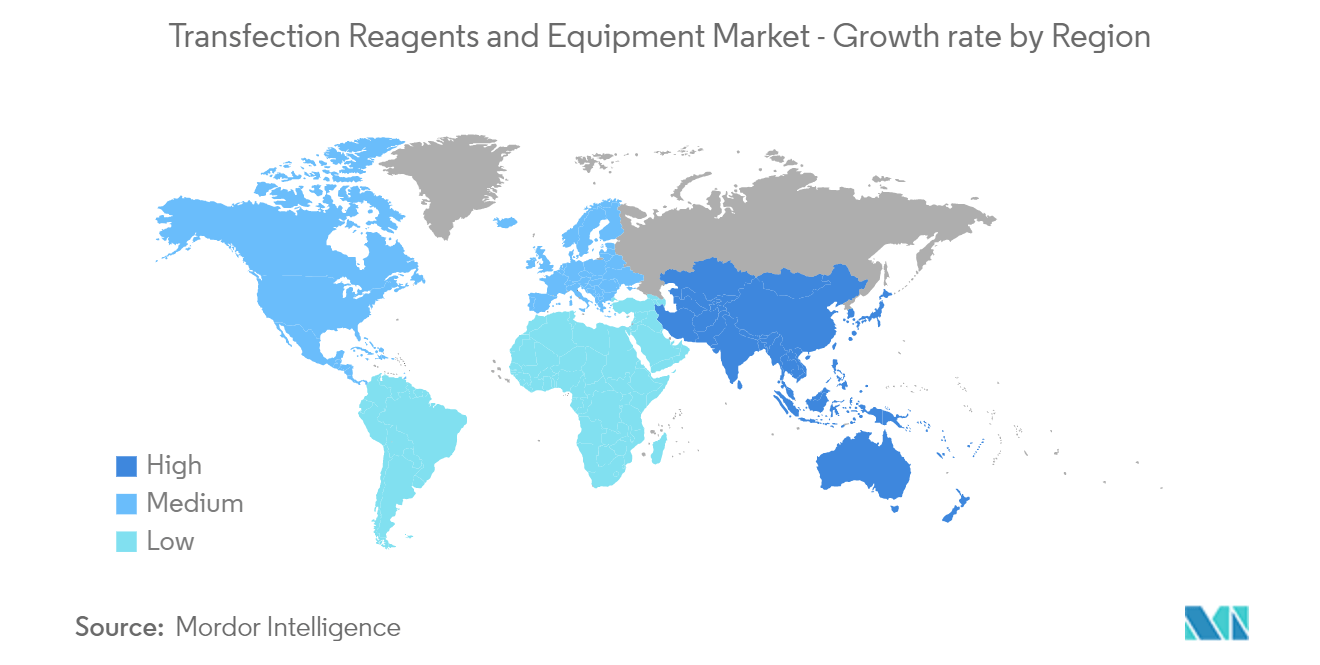Market Trends of Transfection Reagents and Equipment Industry
Pharmaceutical & Biotechnology Companies Segment is Expected to Hold a Significant Share in the Market Over the Forecast Period
The use of biopharmaceutical products has remarkably increased over the years for the treatment of multiple pathological conditions, such as genetic diseases, cancer, etc. With the growing burden of diseases, the need for early diagnosis and treatments also increases. The pharmaceutical and biotechnology companies have increased their investment and research for such therapies, and as transfection reagents and equipment are highly required in such research processes, the increasing demand for transfection reagents and equipment is expected to enhance the segment's growth.
The increasing research and development expenses by various pharmaceutical and biotechnology companies are a major factor driving the segment growth. For instance, as per the annual report 2021 of Novartis AG, one of the global market players in the pharmaceutical industry, the company invested USD 14,886 million in R&D in FY 2021 which increased from USD 14,197 million in the previous year. Similarly, according to the annual report of Eli Lilly and Company in 2021, the research and development expenses of the company increased to USD 7,025.9 million in 2021 which is very high compared to USD 6,085.7 million in R&D expenses in the previous year.
Additionally, the research and development collaborations for the development of new genetic products are also expected to enhance the segment growth. For instance, in December 2022, Eli Lilly and Company and ProQR Therapeutics N.V. announced the expansion of their licensing and collaboration agreement focused on the discovery, development and commercialization of new genetic medicines.
Thus, the aforementioned factors such as the increasing research and development expenses, and the increasing collaborations and agreements for developing newer genetic products are expected to boost the segment growth.

North America is Expected to Hold a Significant Share in the Market Over the Forecast Period
Factors such as increasing investments in research and development in genomics, increasing healthcare expenditure, rising developments by major market players, and the availability of advanced technologies are expected to fuel market growth in North America.
For instance, in September 2021, the National Institutes of Health awarded USD 16 million to the University of Washington School of Medicine's scientists and their collaborators to fund two projects within the consortium. The first project aims at studying the more than one million known regulatory elements in the genome and their variants to determine how they affect gene expression. The second project aims at studying the effect of about 200,000 single nucleotide variants, which contain a change of a single DNA molecule in a gene sequence in about 32 genes that are witnessed in specific diseases, including cancer.
Similarly, in October 2022, the Government of Canada invested over USD 5.6 million to help early-stage genomics companies bring new products to market Thus, the rising investments in genomic research are expected to boost the market growth in the region.
Moreover, the rising developments by key market players are also expected to enhance market growth. For instance, in August 2021, Mirus Bio, a United States-based company, expanded its TransIT VirusGen platform, which is compliant with good manufacturing practices (GMP) viral vector manufacturing, to support cell and gene therapy development, process activities, and commercial production. The expansion, referred to as TransIT VirusGen GMP transfection reagent, is designed to enhance the delivery of packaging and transfer vector DNA to suspension and adherent HEK 293 cell types to increase the production of recombinant adeno-associated virus and lentivirus vectors.
Thus, the aforementioned factors such as the increasing funding for genomics research, and the increasing developments by key market players are expected to boost the market growth in the region.


